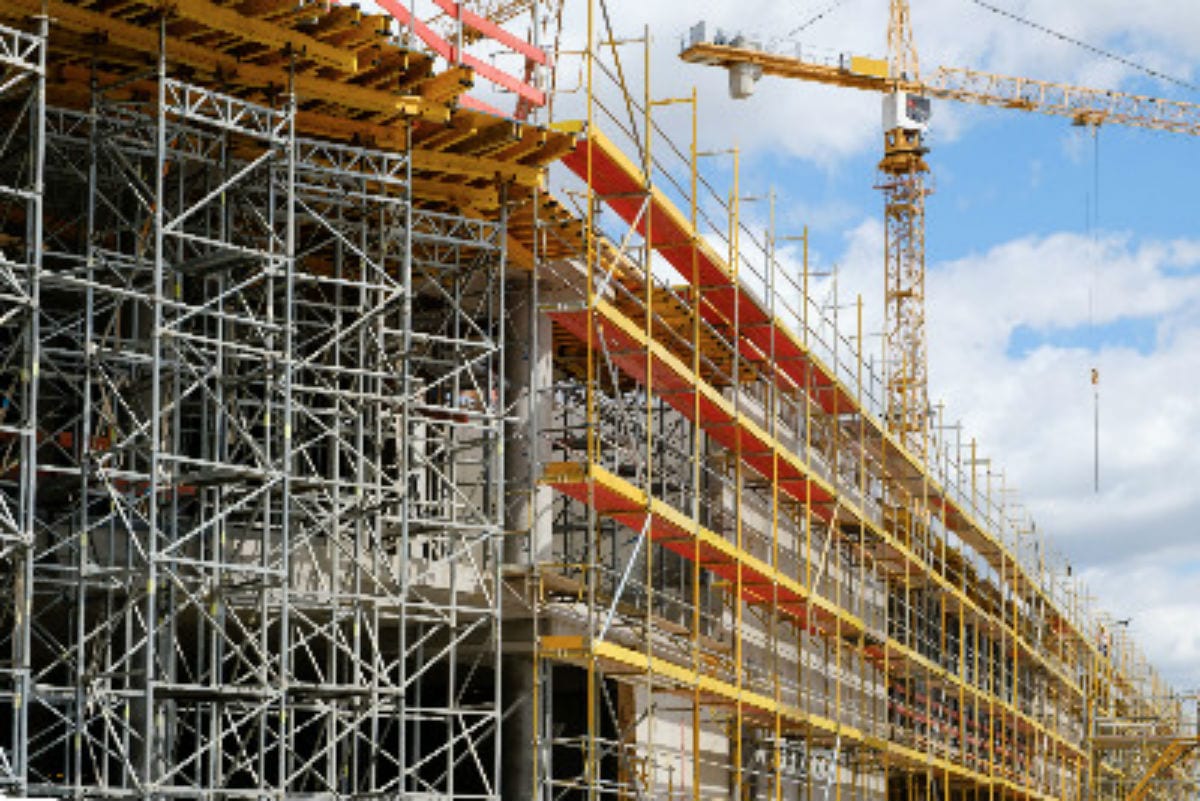Within the constantly changing landscape of construction, commercial scaffolding stands as a crucial component that improves efficiency and safety in multiple projects. From towering skyscrapers to intricate rehabs, scaffolding offers the essential backing and access to work at elevated positions, ensuring that teams can execute their duties effectively. However, what precisely is commercial scaffolding, and how come has it turned into indispensable in the modern building industry? Grasping its importance not only helps satisfy regulatory standards but also facilitates more streamlined project execution, eventually leading to favorable outcomes.
As we explore the realm of business scaffolding, we will explore various types of scaffolding systems, their role in enhancing job site safety, and the compliance guidelines such as OSHA guidelines that govern their application. Moreover, we will underscore key considerations for selecting the right scaffolding solutions for your particular project needs, including high-rise buildings to commercial and office builds. Ultimately, at the conclusion of this discussion, you will have a comprehensive grasp of how proper scaffolding practices can revolutionize construction operations, ensuring both security and productivity at every turn.
Grasping Industrial Scaffolding
Commercial scaffolding is a short-term structure employed to support employees and materials during the erection or refurbishment of industrial structures. It offers a secure and stable platform for construction activities at multiple heights, facilitating teams to carry out jobs successfully. Frameworks is vital in large projects where standard ladders or scaffolding alternatives may not suffice, allowing for improved access to various floors of a facility, enhancing efficiency, and guaranteeing that jobs can be accomplished in a timely way.
There are multiple categories of frameworks utilized in business projects, such as structured scaffolding, system scaffolding, and tubular frameworks. Each type serves different uses and is chosen based on criteria such as the project's distinct specifications, elevation, and difficulty. For instance, system scaffolding is extremely versatile and can be adapted for multiple building layouts, while frame frameworks is often employed for straightforward duties that do not demand significant alteration. Understanding the different types helps site managers select the best effective solution for their demands.

The role of scaffolding in current erection cannot be understated. It not only improves work safety by offering safe surfaces for workers but also fosters to productivity by lessening the time laborers invest traveling between multiple floors. As business projects often involve teams working together on several tasks concurrently, efficient framework solutions facilitate continuous activities, reduce hindrances, and promote an organized site atmosphere. Ultimately, proper scaffolding is essential for successful project completion, adhering to timeframes, and maintaining high protection criteria.
Safety and Compliance in Scaffold Systems
Ensuring security and adherence is crucial in scaffold operations, especially in commercial projects where the risks are significant. Employers must adhere to rigorous safety regulations set forth by agencies such as the Occupational Safety and Health Administration, which provide guidelines that help ensure a secure working space for all personnel involved. Adherence with these standards not only safeguards workers but also reduces legal that can arise from incidents or dangerous conduct on the job site.
Training is a crucial aspect of security compliance in scaffold systems. Workers must be provided with the essential knowledge and skills to recognize potential hazards and apply safety measures effectively. This entails understanding how to conduct security inspections, proper use of equipment, and following safety protocols. By supporting comprehensive training initiatives, companies can foster a culture of security, ensuring that staff are alert and prepared to address any issues that may arise while working at elevated positions.
Moreover, routine maintenance and checks of scaffold systems are essential for ongoing security adherence. This includes checking for soundness, deterioration, and ensuring all components are functioning correctly. By conducting https://www.scaffolders-kent.uk/best-commercial-scaffolding-in-kent/ and upkeeping equipment, construction companies can proactively spot and resolve issues, thereby guaranteeing the security of their workers and the complete success of the project. A commitment to safety and compliance not only enhances worker safety but also boosts the productivity and standing of the company as a whole.
Scaffolding Systems for Contemporary Developments
In the current fast-paced construction environment, efficient scaffolding systems are essential for the effective completion of contemporary projects. With the growing complexity and size of business builds, scaffolding methods must be versatile and adaptable. Modular scaffolding has become as a preferred choice in this landscape, offering rapid assembly and disassembly, which minimizes downtime on site. This flexibility allows contractors to respond quickly to job changes and maintain tight schedules, ultimately enhancing productivity and efficiency.
Worker safety remains a top priority in any construction job, and advanced scaffolding systems include features specifically developed to mitigate risks. Modern scaffolding equipment often includes protective rails, non-slip surfaces, and automatic locking mechanisms to improve worker protection. Moreover, these systems are designed to comply with the most current OSHA regulations and industry guidelines, ensuring that job sites maintain a high level of safety for all workers. Training programs tailored to educate workers with the specific scaffolding methods being used additionally bolster the commitment to a safe working culture.
The importance of scaffolding in the implementation of large-scale jobs, such as tall buildings or large commercial complexes, cannot be overstated. Effective project planning and logistics play a vital role in the scaffolding installation, including factors such as load limits and site entrance. Selecting the right type of scaffolding and understanding the unique requirements of each job ensures that construction efforts proceed smoothly. As projects continue to progress, embracing innovative scaffolding systems will be key to enhancing overall efficiency, maintaining safety standards, and achieving project success in contemporary construction.
